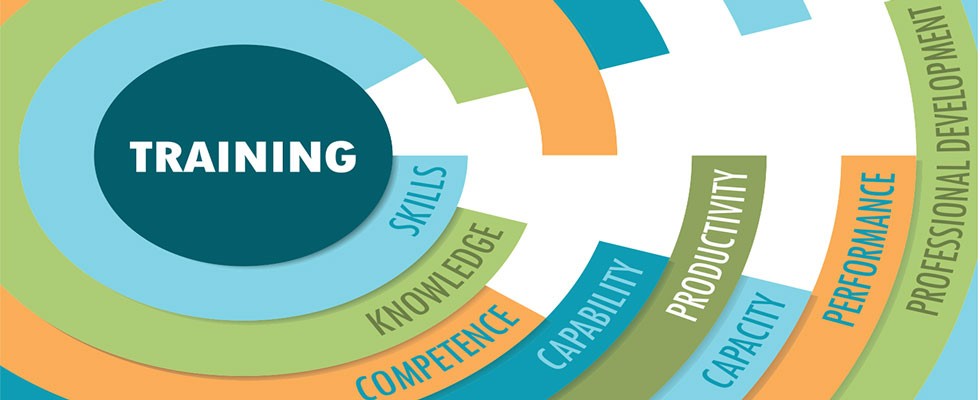
How a company conducts new employee training and orientation can influence how long a staff member stays, as well as their on-the-job work ethic. It’s crucial for the future of a business to ensure these training practices are done correctly.
Before establishing tips for a smooth new hiring process, it’s important to differentiate between the concepts of onboarding, orientation and training. The onboarding process begins the first time a prospect is contacted, whereas orientation and training are processes included throughout the onboarding process and. An employee’s orientation is typically held the first day or week an employee starts. Training continues throughout the tenure of the position as deemed necessary.
Importance of Strategic Onboarding
Employee retention truly begins before the new hire is selected. Before hiring, it is essential to evaluate the goals for the position and ensure the job posting articulates them accurately. New hires need to have a clear idea of what they are signing up for when they accept a position. If these goals and job duties are clear from the start, they will know immediately what is expected of them.
Retention also begins the instant the new employee signs their paperwork. How someone is trained in their first few days determines their mindset about the company. There is a strong correlation between proper orientation and staff retention rates.
Studies from the Society for Human Resource Management (SHRM) show that organizations with a set-in-place onboarding process experience 50% greater productivity with new hires than companies without standard protocols. SHRM also found that 69% of employees are likely to stay for at least three years if they experience a great onboarding process. This data proves the importance of thought-out, strategic orientation for employee retention rates.
Orientation & Training Save You Time
Orientation lays a strong foundation for an employee’s future within a company. Without proper training, an employee will not start off feeling comfortable in their position. This means it will take longer for them to grow and progress within their role.
Training from the start also decreases the need for constant supervision. A properly trained employee is more likely to work both confidently and independently. These are important attributes in a new hire because it saves time throughout the workday for both the new hire and supervisor. Additionally, independent work inspires creativity and development within a position.
With a solid orientation, an employee is less likely to make mistakes that could affect not only their work, but the company’s security and reputation.
Tips to Make Strategic Onboarding & Orientation Work for You
Although an onboarding and orientation process should be catered to specific company needs, there are strategies many businesses find helpful.
1. Mentorship Program
Creating a mentorship program between senior and new employees encourages support, reassurance and socialization. A peer mentor does not need to be in the same department as the new employee. Ultimately, this helps both the senior employee and the new employee create a solid support system to grow in their careers.
2. 30/60/90
Many businesses utilize this type of onboarding plan. It consists of goals the company sets for the employee surrounding their first 90 days, with measurable targets at 30 and 60 days. This helps a new hire understand the company’s expectations of them right from the start.
3. Team Bonding
When a new hire starts, a company lunch or bonding activity can help them get accustomed to the culture and allows other employees to get to know the new team member.
These are just a few examples of strategies to introduce new hires to the company. There are many other company-specific alternatives a business could adapt to encourage a strong onboarding process.
Training Never Ends
LinkedIn research shows that 94% of employees are more likely to stay at a company longer if the employer invests in their careers. This is done by encouraging employees to expand their knowledge through attending conferences or webinars or by providing them with educational training opportunities.
Continuous training provides crucial skills and information that help an employee better understand where they fit and why they are a key member. A strong business should be constantly adapting its culture to suit the industry. As a company evolves, the employees should too.
This may look like more diversity, equity and inclusion education or training on COVID-19 protocols. Some companies have educational guidelines their employees must follow; however, the learning should not stop there.
If all employees are trained as a company evolves, the workplace will continue to grow and thrive. This creates a positive work environment that encourages productivity and makes an employee feel valued.
Regardless of what position an employee holds, training is a fundamental aspect. It improves employee knowledge and skills, leading to a more effective team. In fact, Harvard Business Review research found that employees who are inspired are 125% more productive than employees who are merely satisfied with their jobs. Inspiration in the workplace is created by building upon an employee’s existing strengths through workshops and trainings. Incorporating training that includes the employee’s supervisor can also help to inspire collaboration and productivity.
No matter what specific orientation or training a business adapts for new hires, it’s important to encourage employees to always learn and grow within their position from their first day forward.
